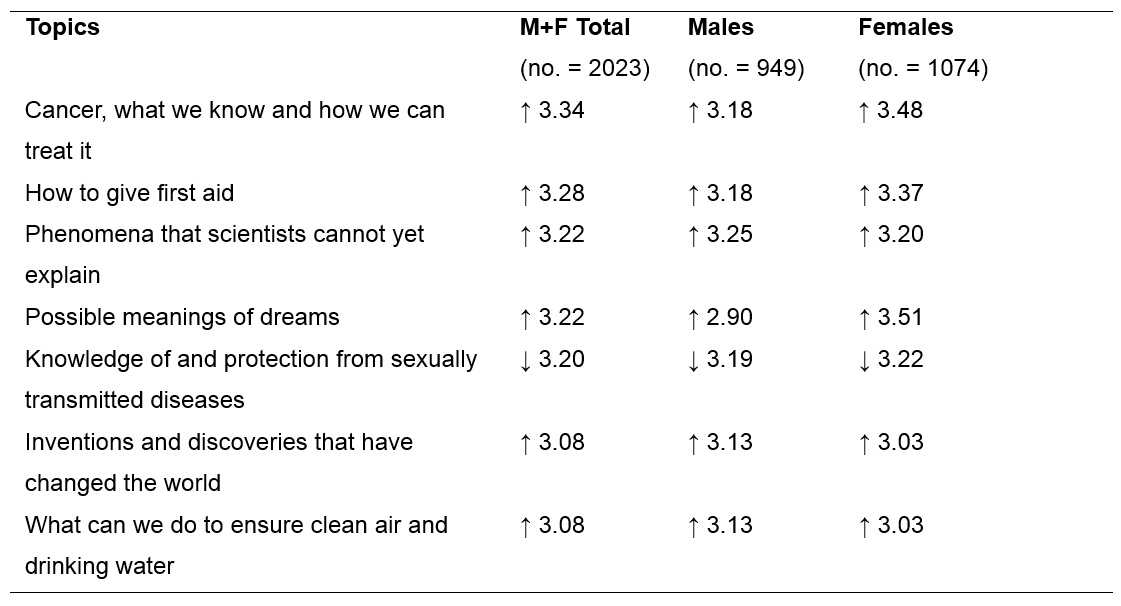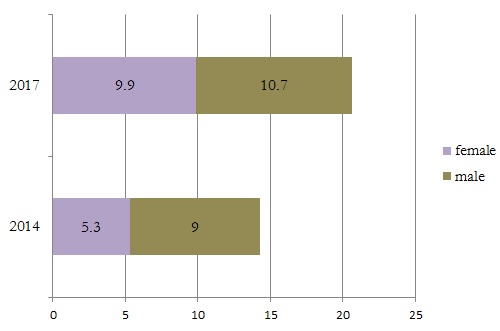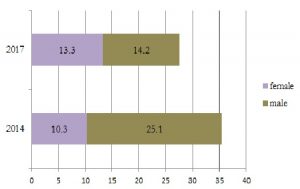What do teenagers think of science and technology? What are their interests and their school experiences? How do they imagine their future as workers?
What do teenagers think of science and technology? What are their interests and their school experiences? How do they imagine their future as workers?
This contribution presents the results of a recent study that focuses on the attitudes and orientations of teenagers regarding science and technology, with a particular attention to how they perceive their future, verifying the way opinions and trends evolve.
The relationship between adolescents and science has been studied for several years and many investigations have looked into the motivations, skills and the most effective teaching strategies to foster a better relationship between the younger generations and science.
The “Giovani, Scienza e Tecnologia” (Youth, Science and Technology) survey, promoted and coordinated by Observa and PRISTEM Bocconi in spring 2017, was carried out using various series of questions from the international ROSE (Relevance Of Science Education) survey, devoted to studying the orientation of students towards science and technology. The survey had also been carried out in 2014, so it was possible to detect any changes in the attitudes and behaviours of students, also in a comparative perspective with other countries.
Students are increasingly interested primarily in health issues as regards specific diseases, but also in first aid activities, as shown in Table 1. Considering the first 10 items from a list of 26, females show a greater attention to health. Between 2014 and 2017 there is growing interest in the search for unknown phenomena and the environment, while the interest in sexually transmitted diseases decreases.
Table 1 The main scientific interests of Italian adolescents (average values, on a scale 1-4). The arrows next to the total average values show the difference in position with respect to the 2014 “Giovani, Scienza e Tecnologia” survey.
Males are mostly interested in technology, astronomy, agriculture and personal health, while females show greater attention to public health, the care and the meaning of life and scientific knowledge in general. Compared to 2014, we see in males an increased attention to health issues. Taking into account geographical areas, the students from Southern Italy show an increased interest in technology, agriculture and nutrition, public health and the meaning of life. These orientations have grown considerably compared to 2014.
With regard to cultural environment, we remark that in families with a higher cultural background there is a greater interest in scientific knowledge and astronomy.
Studying science in school is significantly appreciated by students. However, the survey makes it evident that they distinguish between expectations and what is actually learned and usable thanks to science lessons.
We notice that, over time, there is a growing satisfaction with reference to the importance, development of curiosity and usefulness of science in school. This fact suggests a reflection on the practical implications of scientific and technological activities carried out in the classroom, with particular reference to the need expressed by many educational guidelines to use the IBSE (Inquiry-Based Science Education) approach and the laboratory practices related to it . In this regard, the survey shows that eight schools out of ten have a laboratory but it is regularly used, on the average, in only 17% of cases. The schools in North-Western and Central Italy are the ones that use it more frequently (29% and 25%).
Students were also asked to express their orientation towards a career to be embraced within science and technology. We notice a general increase in preferences: nearly two out of ten students imagine a future as scientists. Figure 1 shows that the number of female students who intend to pursue a career as scientists has almost doubled, while the proportion of males has only slightly increased: from 9 to 10.7%.
Fig. 1 Intention to become scientists (2014: no. = 3436; 2017: no. = 2021)
The majority of those who think of becoming scientists live in the North and belong to families with a higher cultural level.
The preferences change significantly if we turn to professional careers (Fig. 2), in particular in the technological industry. In this case the percentages of interest are significantly higher, with a reversal of the trend: the proportion of males decreases over time, while the interest of females increases.
Fig. 2 Intention to work in the field of technology (2014: no. = 3436; 2017: no. = 2022)
Students were asked to give their views on various aspects regarding the usefulness, development and impact of scientific activities. Their positions are clear, even though there are some differences compared to 2014 survey data.
Firstly, there is still confidence in the ability of science to eradicate the most lethal diseases, albeit with a slight decrease, while the idea that scientific activities contribute to a better future increases.
There is a special sensitivity to environmental issues, for which an active participation with visible actions is claimed.
Confidence in science is expressed with some distinctions and articulations. We find a decrease in the proportion of students critical in three regards: science threatens the environment, it changes our lives too quickly and it will eliminate poverty and hunger from the world. We find a starker judgment against scientific institutions about these themes, but the concern that science could threaten fundamental values such as human life and the family is in the last position.
As regards scientists, judgment is more elaborate. While on the one hand their objectivity is acknowledged and there is a good level of confidence, on the other hand doubts are manifested about the ability to always offer sure answers.
A more analytical examination through statistical analysis enables us to distinguish three thematic areas, verifying the relationship with some independent variables: territorial area, gender, cultural belonging.
As regards the usefulness of science, we remark that it is especially appreciated by males who live in the North and belong to families with a higher cultural level.
The second area allows us to verify the preferences about the objectivity of scientists. In this case it is mainly the males who live in Southern Italy and from families with a lower cultural level who support the objectivity of scientists’ work.
As for the opinions on the negative effects of scientific activities, those who express the most concern are male residents in Centre and South, who live in households with a cultural level below average.
The data presented show interesting effects of science and technology on the adolescents’ attitudes. A framework full of insights emerges, thanks to territorial and cultural factors that signal different ways of understanding scientific results and activities.
Over time, a positive attitude towards science is growing, especially for activities related to health and knowledge. There are still significant differences between male and female interests, especially in the area of health and care, although in both the sensitivity for scientific inquiry increases.
This growing interest is linked to a good appreciation of school activities, which in part make it possible to design one’s own future, although they do not always favour a tangible fallout in everyday life. The most significant new element regards the growing desire of teenage girls to become scientists: from 2014 to 2017 the percentage has doubled and is now in line with that of males. As regards professions in technology, the situation is different: we see here a decline of interest in males and an increase in females.
On the whole, we see a positive view of science in various areas: knowledge, environment and development. This is not blind faith, considering that students recognise the limits of scientific activity, in the sense that it cannot give definite answers to all the problems it addresses.
In short, science and technology are central to the interests of teenagers and offer them questions and opportunities useful for dealing with the present and planning the future. Students show a strong familiarity with various scientific fields, exhibiting curiosity and critical spirit and preferring a useful and thoughtful science rather than an all-powerful science that pays little attention to the effects of its activities.
Italian version of the article and references is available at this link: http://rdcu.be/Givt










